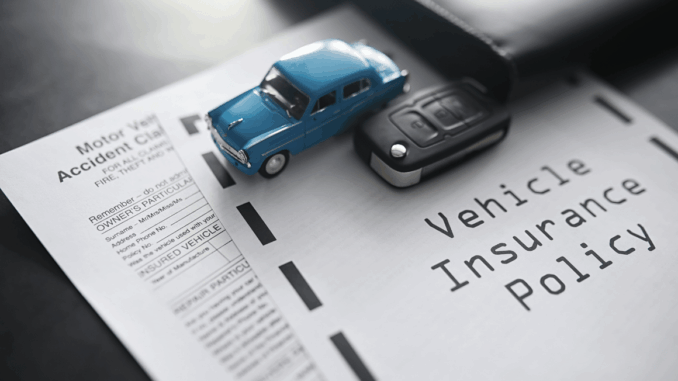
Auto insurance is a necessary expense for drivers, but that doesn’t mean you have to accept sky-high premiums. With the right strategies, you can significantly reduce your auto insurance costs while still maintaining the protection you need. Smart financial management isn’t just about cutting costs—it’s about optimizing value.
In this post, we’ll explore proven, effective strategies that can help you save money on car insurance without leaving yourself vulnerable.
1. Shop Around and Compare Quotes
One of the most powerful tools you have as a consumer is choice. Auto insurance premiums can vary dramatically from one insurer to another—even for the exact same coverage. Factors like underwriting guidelines, risk assessment models, and target customer demographics differ among providers.
Pro Tip:
Use reputable comparison websites or work with an independent insurance broker to gather quotes from multiple insurers. Be sure to compare apples to apples—make sure each quote offers the same coverage limits, deductibles, and benefits.
2. Increase Your Deductible (Strategically)
Your deductible is the amount you pay out of pocket before your insurance kicks in. By raising your deductible, you’re essentially taking on more risk, which typically results in lower premiums.
However, this only makes sense if you have enough savings to comfortably cover the deductible in case of an accident.
Example:
Raising your deductible from $500 to $1,000 could save you up to 20–30% annually, depending on your insurer and driving profile.
3. Bundle Your Policies for Multi-Line Discounts
Insurance companies reward customer loyalty and risk consolidation. If you own a home, rent an apartment, or carry other types of insurance, you can usually get a discount for bundling them together with your auto policy.
Common Bundle Options Include:
- Auto + Home Insurance
- Auto + Renters Insurance
- Auto + Life Insurance
In some cases, bundling can save you 10% to 25% on your overall premiums.
4. Maintain a Clean Driving Record
Your driving history is one of the most significant factors affecting your insurance rate. Accidents, speeding tickets, DUIs, and other violations signal higher risk to insurers and result in higher premiums.
Tip:
Even minor infractions can stay on your record for 3–5 years, so drive defensively and obey traffic laws to qualify for good driver discounts—which can be as much as 20% off in some states.
5. Maximize Available Discounts
Most drivers are eligible for at least a few policy discounts, but they’re often overlooked or not clearly advertised. Always ask your insurer for a full list of available discounts.
Potential Discounts Include:
- Good Student Discount – For full-time students with a B average or higher
- Defensive Driving Course – Completion of approved courses may reduce your rate
- Low-Mileage Discount – For drivers who travel fewer miles than average annually
- Military or Federal Employee Discounts – Special rates for active duty or veterans
- Affinity or Professional Organization Discounts – Certain groups and employers have deals with insurers
6. Drive a Safe, Low-Risk Vehicle
The type of vehicle you drive plays a huge role in determining your insurance premium. Cars that are statistically less likely to be involved in accidents or stolen—and those that are cheaper to repair—generally come with lower insurance costs.
Factors That Reduce Premiums:
- High safety ratings (e.g., vehicles with advanced driver-assistance systems)
- Low repair costs
- Low theft rates
- Smaller engine size (sports cars often carry higher premiums)
Before buying a car, research its insurance cost profile—this could save you hundreds annually.
7. Limit Your Mileage
Insurers consider how much you drive when assessing your risk. More time on the road means more exposure to potential accidents. If you work from home, use public transit, or have a short commute, be sure to report your accurate mileage to your insurer.
Savings Tip:
If your annual mileage is below the national average (~12,000 miles), you may qualify for a low-mileage discount of up to 10%.
8. Consider Usage-Based or Telematics Insurance
Many insurers now offer usage-based insurance (UBI) programs, which involve installing a small device in your vehicle or using a mobile app to track your driving behavior. Metrics such as speed, braking habits, time of day, and mileage are analyzed to determine your risk level.
Safe drivers who enroll in these programs can save up to 30% or more.
Popular Programs:
- Progressive’s Snapshot
- Allstate’s Drivewise
- State Farm’s Drive Safe & Save
- Nationwide’s SmartRide
These programs are especially advantageous for cautious drivers with short commutes.
Final Thoughts: Smart Choices Lead to Big Savings
Auto insurance is a balancing act between cost and coverage. While cutting corners on coverage can be risky, overpaying is equally avoidable. By taking the time to understand how insurers calculate rates and proactively managing the variables you can control, you can dramatically reduce your premium—without sacrificing peace of mind.
Takeaway:
Think of auto insurance as a customizable product, not a fixed expense. With research, negotiation, and smart habits, you can tailor your policy to fit your lifestyle and budget.
Next Steps:
- Reassess your current policy and driving habits
- Request updated quotes annually
- Ask your agent about discounts you may be missing
- Review your vehicle’s insurance cost before your next purchase
Protect your ride, protect your wallet.
Leave a Reply